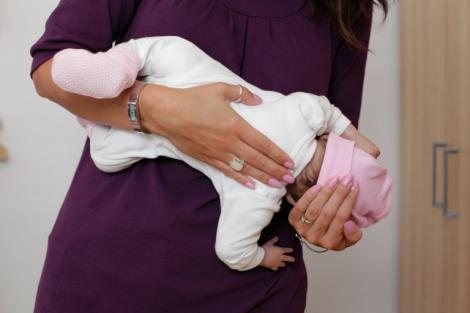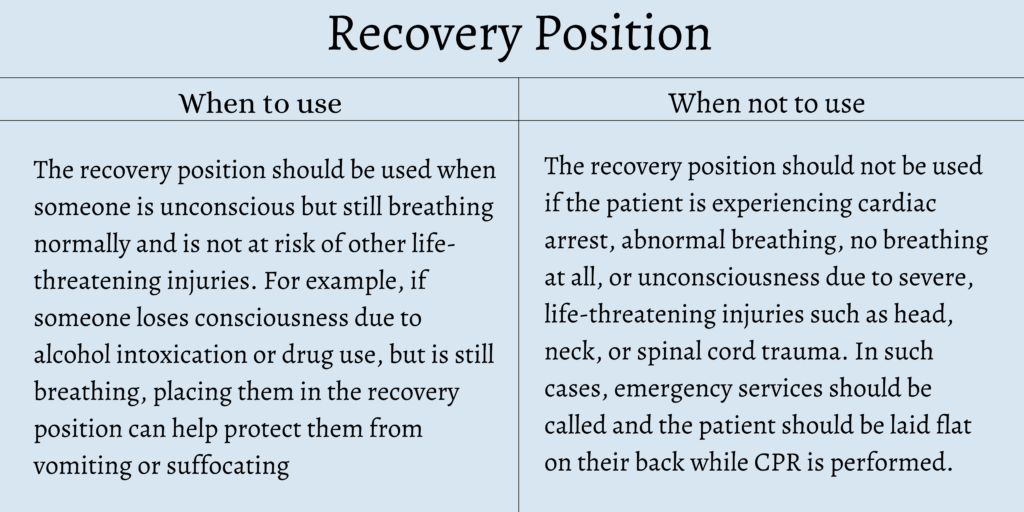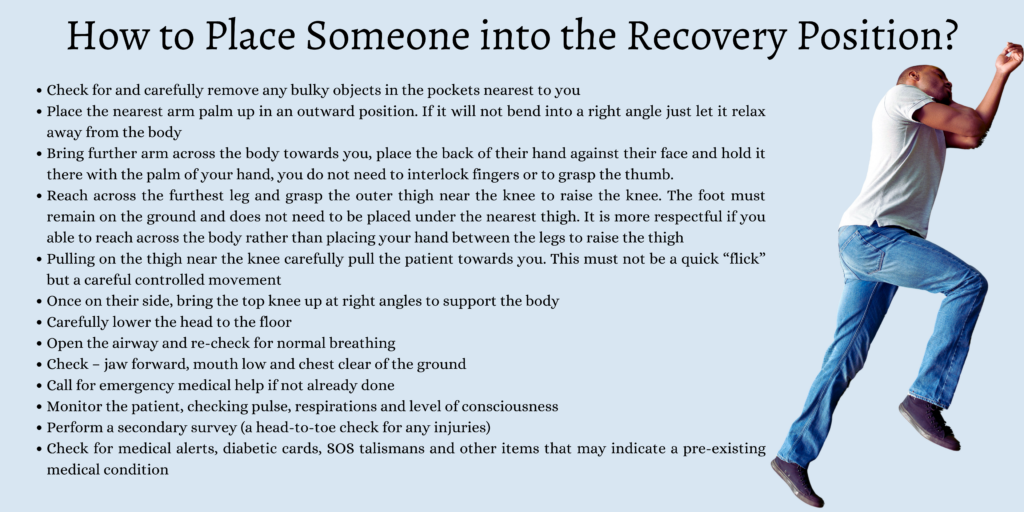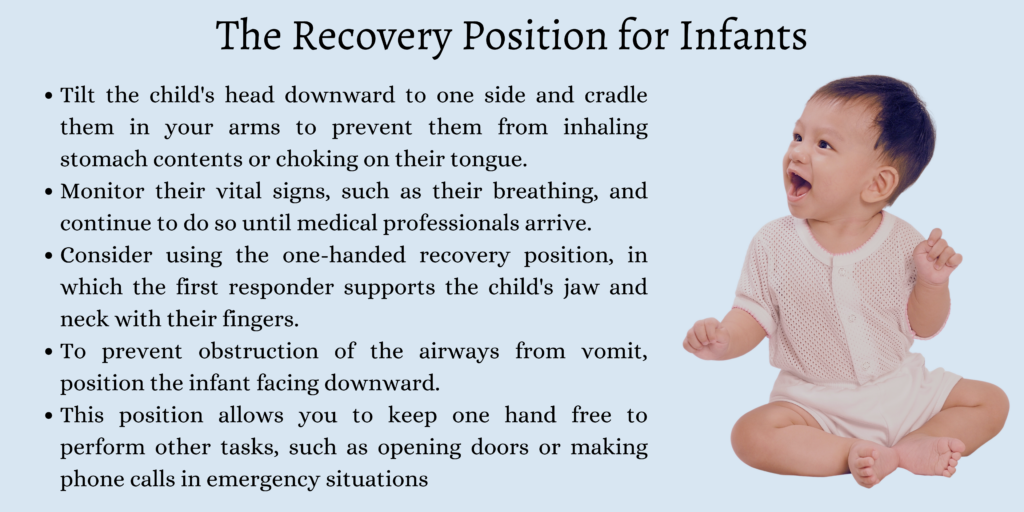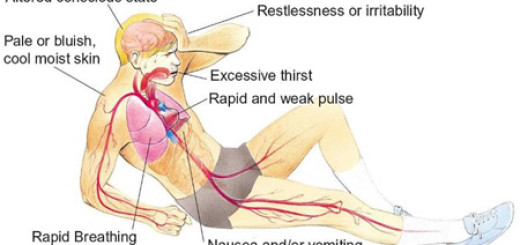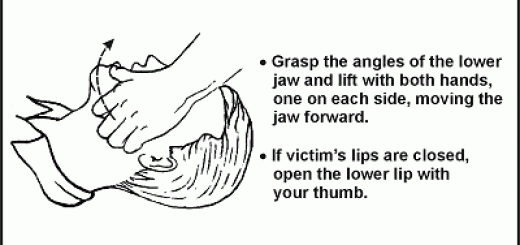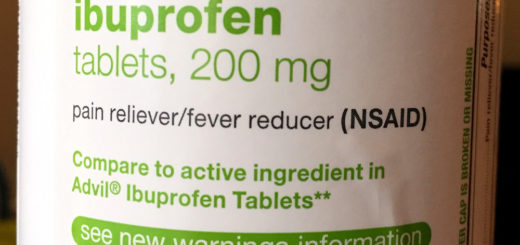What is the Recovery Position in First Aid?
The recovery position is used to protect the airway of an unconscious patient. If a patient is unconscious and lying on their back, there is a risk of the airway becoming blocked due to the tongue or by regurgitation of stomach contents. This situation can be fatal within minutes, as the patient will be unable to breathe.
The recovery position involves rolling an unconscious patient onto their side in order to protect the airway. The recovery position is taught on most first aid & CPR courses. There are a variety of techniques that can be used to roll a patient into the recovery position. In this first aid blog post, we will describe one recovery position technique that can be used.
The recovery position should only be used for unconscious patients who are breathing normally. If the patient is not breathing normally, immediately commence Cardiopulmonary Resuscitation (CPR) and send for the nearest Automated External Defibrillator (AED).
The purpose of the recovery position is to facilitate the drainage of any material that has been regurgitated from the patient’s mouth. The top portion of a person’s esophagus, or food pipe, lies adjacent to the top of the windpipe. If something is regurgitated from the esophagus, there is a risk that it could enter the lungs, potentially causing drowning or aspiration pneumonia, which is an infection that occurs in the large airways or lungs when food or liquid is inhaled instead of swallowed.
When to Use the Recovery Position
The recovery position should be used when someone is unconscious but still breathing normally and is not at risk of other life-threatening injuries. For example, if someone loses consciousness due to alcohol intoxication or drug use, but is still breathing, placing them in the recovery position can help protect them from vomiting or suffocating.
When Not to Use the Recovery Position
The recovery position should not be used if the patient is experiencing cardiac arrest, abnormal breathing, no breathing at all, or unconsciousness due to severe, life-threatening injuries such as head, neck, or spinal cord trauma. In such cases, emergency services should be called and the patient should be laid flat on their back while CPR is performed.
How to Place Someone into the Recovery Position?
Follow these steps to place an unconscious, but breathing, patient into the recovery position:
- Check for and carefully remove any bulky objects in the pockets nearest to you
- Place the nearest arm palm up in an outward position. If it will not bend into a right angle just let it relax away from the body
- Bring further arm across the body towards you, place the back of their hand against their face and hold it there with the palm of your hand, you do not need to interlock fingers or to grasp the thumb.
- Reach across the furthest leg and grasp the outer thigh near the knee to raise the knee. The foot must remain on the ground and does not need to be placed under the nearest thigh. It is more respectful if you able to reach across the body rather than placing your hand between the legs to raise the thigh
- Pulling on the thigh near the knee carefully pull the patient towards you. This must not be a quick “flick” but a careful controlled movement
- Once on their side, bring the top knee up at right angles to support the body
- Carefully lower the head to the floor
- Open the airway and re-check for normal breathing
- Check – jaw forward, mouth low and chest clear of the ground
- Call for emergency medical help if not already done
- Monitor the patient, checking pulse, respirations and level of consciousness
- Perform a secondary survey (a head-to-toe check for any injuries)
- Check for medical alerts, diabetic cards, SOS talismans and other items that may indicate a pre-existing medical condition
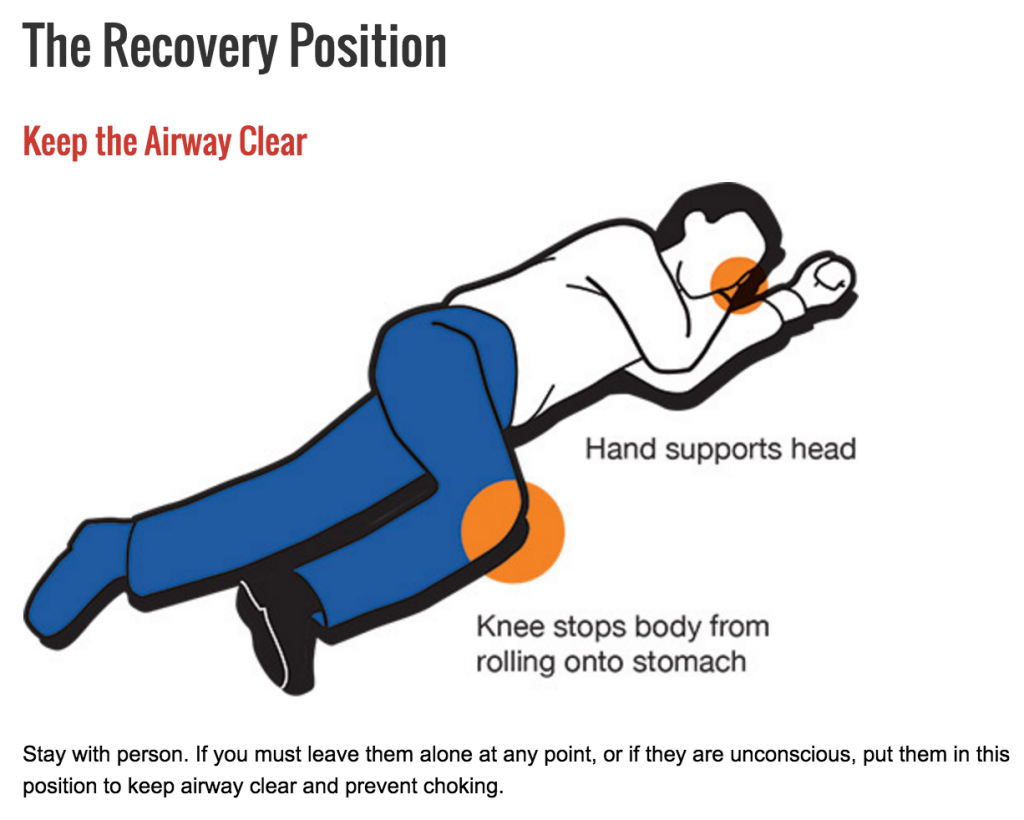
The Recovery Position for Infants
When using the recovery position on an infant or child under one year of age, follow these steps:
- Tilt the child’s head downward to one side and cradle them in your arms to prevent them from inhaling stomach contents or choking on their tongue.
- Monitor their vital signs, such as their breathing, and continue to do so until medical professionals arrive.
- Consider using the one-handed recovery position, in which the first responder supports the child’s jaw and neck with their fingers.
- To prevent obstruction of the airways from vomit, position the infant facing downward.
- This position allows you to keep one hand free to perform other tasks, such as opening doors or making phone calls in emergency situations.
